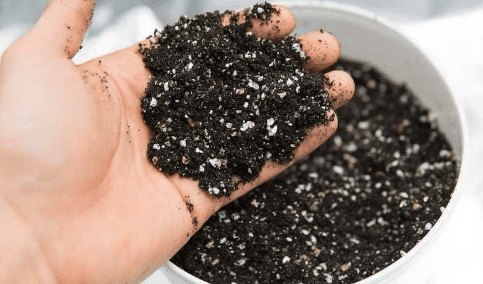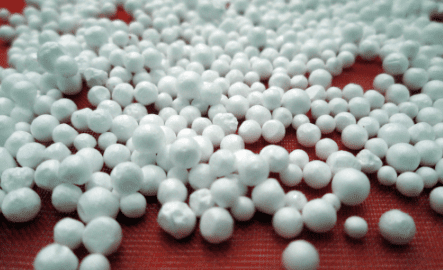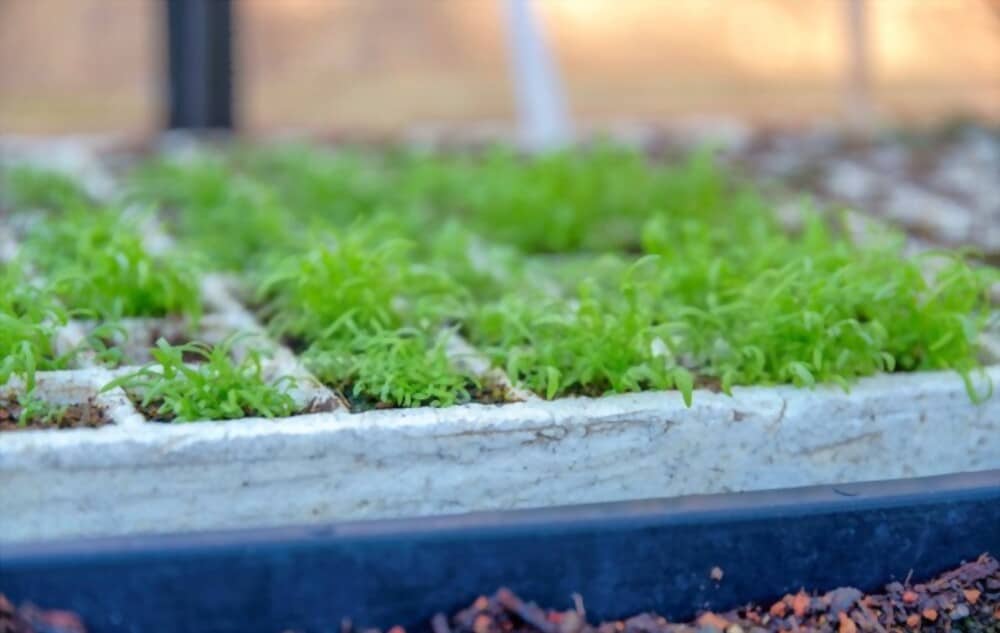
Styrofoam can be utilized in a variety of ways in gardens, and occasionally it is mistaken for perlite. Adding it to soil is not one, regardless of whether it is your vegetable garden or a container garden.
Styrofoam may appear useful when added to soil, but it might actually do more harm than good. Since it cannot biodegrade, Styrofoam is not good for the environment. It and perlite are sometimes mistaken, but they have very different properties in terms of drainage, aeration, and water retention.
We have described what styrofoam will actually do when added to soil and how employing its “look-alike,” perlite, can help plants. Improving soil quality is essential for healthy plant growth.
Table of Contents
Is Styrofoam Safe for Plants?
Styrofoam has long been regarded as a suitable filler for plant pots because of its durability and potential for better drainage.
However, given that landfills are already brimming with non-biodegradable items, it is still unclear how styrofoam products disintegrate over time. Styrofoam is no longer advised to be added to soil due to its negative impact on the environment.
Styrene, from which Styrofoam is manufactured, is recognized as a carcinogen by the National Institute of Health. But compared to people who only plant in Styrofoam containers, it is more dangerous to those handling it.
It is believed that Styrofoam takes many years to degrade and is unaffected by soil or water. Leaching levels are not high enough to be a problem because it needs a certain temperature to happen, according to specialists. Therefore, it is safe for plants to grow in recycled Styrofoam planters.
However, if you’re aware of the potential consequences of planting in Styrofoam, it’s best to stay away from growing edibles and stick to only ornamental plants. It’s crucial to dispose of recycled foam planters properly. However, burning must be avoided when disposing of waste because it releases harmful pollutants.
Can Styrofoam Benefit the Soil?
Inquire about advice from a gardener who uses Styrofoam in their landscaping. They would undoubtedly be delighted to give you some advice on gardening with Styrofoam.
Styrofoam is vital to gardening in a variety of ways. However, there are lots of misconceptions about using this substance in gardens. Check to see if Styrofoam benefits the soil in any way.
Drainage
Have you heard that packing Styrofoam into the bottom of containers can increase drainage? You probably have. Styrofoam has been used by gardeners for years, but is it really a smart idea?
The answer, though, is no, really. Styrofoam packing peanuts can be detrimental to the health of your plants and soil. Deep plant roots can develop in foam material, but without adequate drainage, they risk dying in a wet environment.
Furthermore, because the synthetic material used to make Styrofoam peanuts is devoid of minerals, Styrofoam offers little nutritional value to the plants. Despite being constructed of natural materials, biodegradable packing peanuts don’t help with drainage because they break down when they absorb water.
Aeration
A frequent misconception is that the white, foam-like balls used in potting soil are Styrofoam. These ingredients, which are perlite rather than Styrofoam, are used to keep potting soil loose and aerated. Instead of absorbing moisture, it traps it in minuscule crevices all over the outside. It effectively makes water available to neighboring roots.
Unlike Styrofoam, perlite can disintegrate organically over time. As a result, they don’t endanger the environment. whereas Styrofoam takes millions of years to break down. Additionally, it might absorb precipitation and become waterlogged, which would compress the soil.
Styrofoam can slide into a water body during strong rains, adding to the ocean’s pollution.
Water retention
Styrofoam, a perlite alternative, does not help soil retain water. Additionally, adding Styrofoam contributes plastic to the environment. Potting mixes should ideally contain perlite. The surface of the perlite contains porous structures that store water, providing the roots with alternate moisture as needed.
Because perlite enables the soil to drain and hold moisture for a longer period of time, the likelihood of roots drying out is reduced. However, the majority of potting suppliers swap out perlite for a less expensive alternative that serves the same purpose but is bad for the environment.
What is Perlite
Perlite is an amorphous volcanic glass with a high water content that is often created when obsidian is hydrated. It is found naturally and possesses the peculiar quality of rapidly expanding when heated.
Since perlite is created of volcanic glass, its composition is mostly composed of silica, with smaller amounts of aluminum, potassium, and sodium. When added to soil, these elements are also advantageous to plants.
Perlite is not Styrofoam; rather, it is a low-density industrial product used in horticulture, building, and the manufacture of filter materials.
Due to how similar they look, perlite is frequently mistaken for Styrofoam or even eggs in the soil. Perlite has a slightly polished appearance from the structure’s bubbles.
The production facility determines the size of the perlite substrate based on demand and the products sold.
Perlite typically ranges in size from 0 to 2 mm and 1.5 to 3.0 mm in diameter.
The diameter of coarse perlite can range from 3 to 8 mm.
Perlite Properties
| Properties | Perlite |
|---|---|
| Soil Remediation Qualities | No |
| pH Scales | 7.0 — 7.5 |
| keeps nutrients and moisture in the soil | Good |
| improves the capacity of soil drainage | Best |
| Weight | 5–8 lbs/CuFt. |
| Size | 0 — 8 mm |
| Minerals found naturally | Good |
| Awarded a permit for organic gardening | Yes |
| Decomposes gradually. | No |
Amazon has a perlite and vermiculite blend that is affordable for all of your potting needs. To access it, click this link.
Benefits of using perlite in the garden
For a variety of reasons, perlite is a very helpful component in gardening.
- It maintains its shape and is physically stable.
- It doesn’t break down.
- It has a pH that is neutral.
- There are no harmful additions or chemicals in it.
- While allowing the remaining water to drain freely, it can absorb some of the moisture.
- It aerates the air quite well.

Why does Perlite look like Styrofoam?
Are you curious as to why perlite resembles Styrofoam? In essence, the fact that perlite is a white, light-weight granular material is the cause. Obsidian has been hydrated to create an amorphous glass.
When heated to 1,600 degrees Fahrenheit, the glass puffs up like popcorn and takes on the look of Styrofoam. As a result, perlite is occasionally referred to as “volcanic popcorn”.
Perlite is a raw material that has water trapped in it due to the lava’s quick cooling process. The moisture rapidly evaporates when heat is applied.
Styrofoam vs. Perlite: Are They the Same?
Let me state whether Styrofoam and Perlite are the same or different in order to go on to additional specifics.
Well, Perlite, a type of volcanic glass with a high water content that is used for growing seedlings in soil or soilless medium, is great for enriching soil used for plants grown in containers. By enhancing drainage and aeration, it offers a healthier root system.
Because it is so expensive to purchase enough perlite for plant-growing pots, Styrofoam is utilized in their place. Expanded polystyrene foam known as Styrofoam is used in plant containers. These foam planters are portable and light in weight.
Compared to Perlite, these Styrofoam containers are less expensive and offer more insulation during the winter.
Can you Plant in a Styrofoam Pot?
You can, indeed. To keep the plants from decaying, make some holes in the bottom of the container for better drainage. Add a few inches of Styrofoam peanuts to the bottom of the planter if the plants have shallow roots.
More potting soil than the plant requires can be contained in a Styrofoam container. Stack well-rotted manure, compost, and commercial potting mix in a container that is 2.5 cm tall. Elevate the container by a few inches using bricks to facilitate drainage.
Put your container where plants may receive the most sunshine possible. Place your plants in the potting soil with care. The plants in the Styrofoam containers need a lot of water on hot days. In that instance, a layer of mulch aids in preserving the coolness and moisture of the potting mix.
The Takeaway:
Due to its ability to enhance drainage, Styrofoam has been used for decades to fill planters. Nowadays, Styrofoam decomposes because landfills are overflowing with non-biodegradable items.
However, it is not advised to add Styrofoam to soil because to the potentially harmful effects it might have on the ecosystem.
Perlite is a fantastic addition to potting soil, however it is a costly substance that can be used to break up compacted soil where plants can’t thrive.

FAQ
Can plants grow in Styrofoam?
Yes it’s simple to grow plants in foam containers, and the more containers you use, the more plants you can grow. For little plants like lettuce or radishes, a small container is suitable. For patio tomatoes, a five-gallon container would do, but for full-size tomatoes, you’ll need a 10-gallon (38 L) foam plant container.
How do you get rid of white fungus balls in soil?
Therefore, mix one gallon of water with one cup of vinegar and use it to irrigate your plants if you’re seeking to get rid of white fungus balls in the soil that these plants grow in. However, to prevent any potential harm to these lovely shrubs, stay as far away from the leaves and stems as you can.
Why is there Styrofoam in my plant?
Styrofoam keeps soil aerated and loose. Your potting soil contains white, foam-like balls to help keep the soil free and aerated, but they are typically made of perlite, a naturally occurring volcanic glass.
What are the white balls in my plant?
In conclusion, the tiny white balls are perlite, volcanic glass that has been heated to more than 870 degrees and has a very low density. Perlite is used in horticulture to help soil drainage and enhance aeration.
What are these white balls in my soil?
The white spheres in your houseplant’s potting soil are perlite, a volcanic glass that occurs naturally. Because it prevents the soil from compacting, perlite is often added to potting soil by manufacturers of soil. Additionally, it promotes drainage to stop the growth of fungus.
